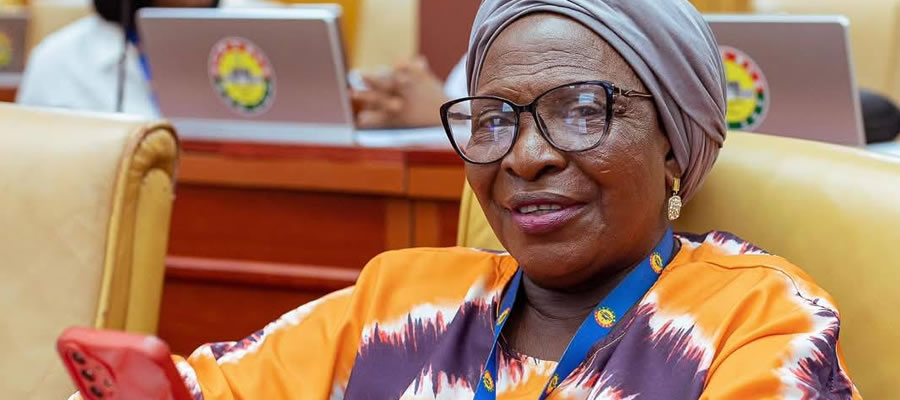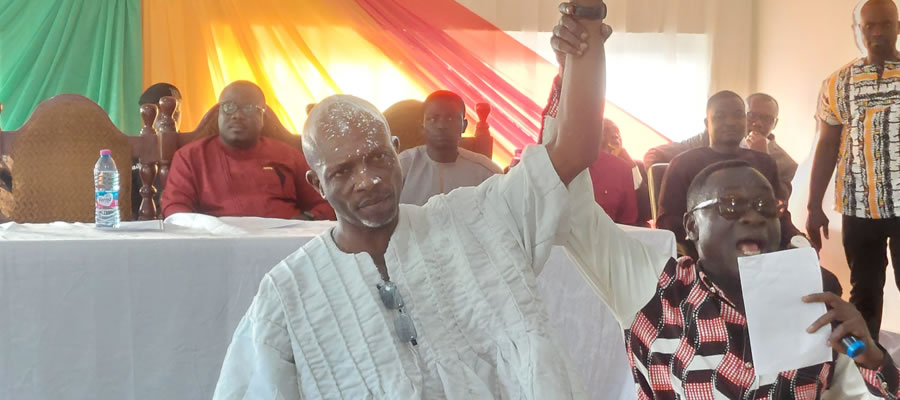

The physical or natural environment to a large extent influences the socio-economic conditions of the people in a particular geographical location. It thus has an enormous impact on human activities. The major aspects of the Physical and natural environment examined include: location and size, topography and drainage, climate and vegetation, geology and soils and natural resources of the Dormaa East District as well as their implications for the development of the district.
Location and Size
Dormaa East District lies between Latitude 7°.08´ North and 7°.25´ degrees and Longitude 2°.35´ West and 2°.48´ west. The District has a total land area of 456 Square Kilometres with Wamfie as District Capital, which is about 1.18 percent of the total land area of Brong Ahafo Region that is 38,557 Square Kilometres and about 0.19 percent of that of the country that is 238,537 Square Kilometres. The District shares common boundaries with Dormaa Municipal to the West, Berekum to the North, Sunyani to the East and South by Asunafo North Municipal and Asutifi District. Fig 1: below shows the Dormaa East District in the National Context, whilst fig. 2: depicts the Dormaa East District Map.
Topography and Drainage
The topography of the District is generally undulating and rises between 180m and 375m above sea level. The highest point is a little over 375m above sea level. The medium range rises gradually between 240m and 300m above sea level. Some of the towns found on this range are Wamfie and Wamanafo. This range stretches from the North West to the South East. The lowland range occurs in the South part of the District. Some of the towns in this area include Kyeremasu and Dormaa Akwamu. The general height is between 180m and 240m above sea level. These facilitate easy construction of roads and mobility.
The drainage pattern of Dormaa East District is basically dendrite and flows in the North-South direction. Most of the rivers have their catchments areas within the District around the high ranges near Wamanafo with only a few taking their sources from Jaman and Berekum Districts. The area is well drained as evidence by the dense network of rivers spread out over the District. The rivers are mostly perennial due to double maximal rain fall, which is experience in the District. The major rivers are Wam, Asuotia, Akontan and Anyinasu. These rivers are potential resources that could be tapped for irrigation and small towns water projects.
Climate and Vegetation
Dormaa East District is located within the East semi-equatorial climate region with a double maximal rainfall regime. The mean annual rainfall is between 124cm and 175cm. The first rainy season is from March to June; with the heaviest rainfall occurring in June while the second rainy season is from September to October.
The dry seasons are quite pronounced with the main season beginning around the latter part of November and ending in February. It is often accompanied by relative humidity of 75-80 percent during the two rainy seasons and 70- 72 percent during the rest of the year.
The major types of flora found in the forest ranges from Shrubs and climbers to giants’ silk cotton tress. Timber species including Wawa (Tripolichition Scleroxylon), Odum (Milicia excelsa), Sapele (Guthagrophrama) and Mahogany (Khaya Invernesses) are found here
The forest has been extensively cultivated leading to an invasion of grassland vegetation. The extensively cultivable forest occupies the North, Central, Western and Southern part of the District. The vegetation is dominated by elephant grass and a few short tresses scattered all over the area. As a result of the farming activities in the district, these vegetation types are threatened and the forests, for instance, keep on changing to grassland.
Soil and Geology
The rocks underlying the soils are of the Birimain formation which covers more than three quarters of the closed forest zone. Economically, it is the most important geological formation in Ghana since it contains all the minerals exported from the country such as gold, diamond, bauxite and Manganese. Associated with the Birimians formation are extensive masses of, granite which occur in parallel belt. These soil types tend to support both industrial and food crops, which include cocoa, coffee, oil palm, citrus, cola-nuts plantain, Cassava and Maize.
Natural Resources
Dormaa East District abounds in a number of natural resources, which serve as a good potential for development. Some of these are being exploited while others remain unexploited. These resources include gold deposits, clay deposits, forest and water bodies. The gold deposit is found in the Dormaa Akwamu. At the moment, there is mineral prospecting going on in two majors’ towns in the district: Wamfie and Wamanafo. These are potentials awaiting large exploration and investment by prospective investors
The District has extensive forest reserves from which valuable timber species like Mahogany, Papao, Asanfina and Edinam, among others, are being extracted on a large scale.
The District is also rich in ground water resources due to the high rainfall and the nature of the rocks. This is essential for ground water development such are the drilling of boreholes to help provide the population with potable water.
Date Created : 11/16/2017 2:20:54 AM












 facebook
facebook
 twitter
twitter
 Youtube
Youtube
 +233 593 831 280
+233 593 831 280 0800 430 430
0800 430 430 GPS: GE-231-4383
GPS: GE-231-4383 info@ghanadistricts.com
info@ghanadistricts.com Box GP1044, Accra, Ghana
Box GP1044, Accra, Ghana